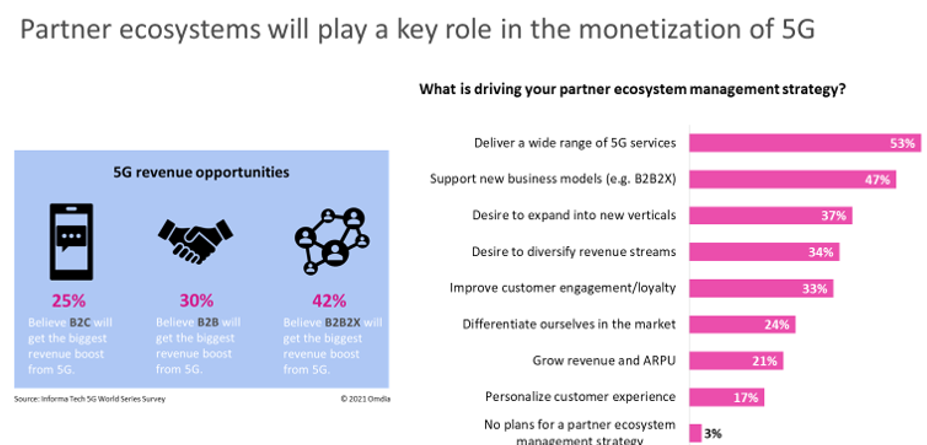We discuss the following topics in this blog:
- Why OSS/BSS Transformation Is Crucial For 5G Monetization?
- What are the Key Elements of OSS/BSS Transformation?
In addition to these topics, we shall also be answering the following FAQs:
- What is an Optical Fibre Cable
- What is WiFi?
Contents
Overview
The telecom industry is on the cusp of a major growth curve. The 5G is the enabling technology for several new-age use cases like autonomous vehicles, remote surgery, smart city, Industry 4.0, and private networks, among others.
As 5G deployments gather pace across the globe and WiFi 6 is on the horizon, the Communications Service Providers (CSPs) are realizing that transforming their operations and business systems will be the key to enhancing digital engagement with their customers and monetizing their network investments.
Why OSS/BSS Transformation Is Crucial For 5G Monetization?
With 5G-enabled network slicing and the anticipated surge in the Internet of Things (IoT) and other services like AI and AR/VR, it is challenging for CSPs to meet the demands to support new business models and use cases without making changes to their BSS.
5G is not just about better speed, exceptional latency and quality of service, but it will enable several new innovative use cases in both consumer and enterprise markets across industries. The CSPs will need to collaborate extensively with partners to provide industry-specific use cases.

In this scenario, the service providers require the next gen OSS/BSS that allow them to capture revenue-generating opportunities and enable new innovative use cases. The next gen BSS systems need to be interoperable, agile, and scalable to monetize 5G networks.
Nearly 72% of 5G revenue growth depends on the transformation of OSS/BSS, according to TM Forum’s report.
The modernization of OSS and BSS systems is also imperative in the telcos’ own journey to becoming a Digital Service Provider (DSP) that needs to react quickly to meet the evolving needs of their subscribers. Right from service ordering, orchestration, billing, device management and customer experience, the legacy OSS/BSS systems are not geared to meet the needs of a DSP.
Sterlite Technologies’ Network Software (NSW) 2.0, microservices-based, webscale-enabled, is designed to meet the evolving demands of the new-age digital service provider. Regardless of their current stage on the digital transformation journey, NSW 2.0 helps telcos leapfrogs them to the top of the evolution.
What are the Key Elements of OSS/BSS Transformation?
It is not surprising that service providers are increasingly moving away from siloed processes to benefit from an integrated data management environment across networks, systems, and devices.
Several key trends indicate that the telcos’ operations and business support systems are also undergoing transformation, much like the networks:
Microservices based architecture: The telcos are moving away from legacy systems and monolithic applications to adopt agile, flexible, cloud-based microservices architecture. This way, the OSS/BSS systems are becoming faster, more effective,reliable and more resilient . It is also enabling them to introduce new and innovative offerings rapidly.
Essentially, microservices architecture is based on the principle of breaking down large, complex, and monolithic IT systems into several small and easily manageable and automated units, each designed to address a particular requirement. They are usually built using Agile and DevOps methodologies and allow CSPs to scale their systems in line with their needs.
Platformification: The 5G allows service providers to offer different use cases, and this demands that the OSS/BSS infrastructure is automated from both the front-end and backend. This is essential considering the service providers would be working with several different industry verticals and seamlessly onboarding high number of partners to monetize their 5G investments. The BSS system needs to be flexible, agile and simplifies management.
Increasingly, the telcos realize the growing relevance of a cloud-native solutions, like NSW 2.0, which can easily scale to meet the high-performance demand without any quality degradation.
Digitizing the customer experience: The CSPs are facing massive changes in customer engagement at all levels. Customers expect the service providers to keep pace with the digital experience provided by the web-scale/OTT players. The problem is that the legacy OSS/BSS is not designed for digital experiences.
Service providers need a next-gen engagement platform that addresses the needs of both retail and enterprise customers, right from discovery, acquisition, onboarding, gain actionable insights, and self-care. STL’s NSW portfolio is designed to help telcos maximize the benefits from an Anything-as-a-Service economy.
The service providers are staring at several new revenue opportunities which will help them move away from conventional voice and data offerings. A robust digital BSS system is a must to capture these opportunities. The new-age NSW portfolio leverages STL’s years of experience and proven expertise in addressing the key pain points of the CSPs.
FAQs
What is an Optical Fibre Cable?
“An optical fibre cable is a cable type that has a few to hundreds of optical fibres bundled together within a protective plastic coating. They help carry digital data in the form of light pulses across large distances at faster speeds. For this, they need to be installed or deployed either underground or aerially. Standalone fibres cannot be buried or hanged so fibres are bunched together as cables for the transmission of data. This is done to protect the fibre from stress, moisture, temperature changes and other externalities.
There are three main components of a optical fibre cable, core (It carries the light and is made of pure silicon dioxide (SiO2) with dopants such as germania, phosphorous pentoxide, or alumina to raise the refractive index; Typical glass cores range from as small as 3.7um up to 200um), Cladding (Cladding surrounds the core and has a lower refractive index than the core, it is also made from the same material as the core; 1% refractive index difference is maintained between the core and cladding; Two commonly used diameters are 125µm and 140µm) and Coating (Protective layer that absorbs shocks, physical damage and moisture; The outside diameter of the coating is typically either 250µm or 500µm; Commonly used material for coatings are acrylate,Silicone, carbon, and polyimide).
An optical fibre cable is made up of the following components: Optical fibres – ranging from one to many. Buffer tubes (with different settings), for protection and cushioning of the fibre. Water protection in the tubes – wet or dry. A central strength member (CSM) is the backbone of all cables. Armoured tapes for stranding to bunch the buffer tubes and strength members together. Sheathing or final covering to provide further protection.
The five main reasons that make this technology innovation disruptive are fast communication speed, infinite bandwidth & capacity, low interference, high tensile strength and secure communication. The major usescases of optical fibre cables include intenet connectivity, computer networking, surgery & dentistry, automotive industry, telephony, lighting & decorations, mechanical inspections, cable television, military applications and space.”
What is WiFi?
“Put simply, WiFi is a technology that uses radio waves to create a wireless network through which devices like mobile phones, computers, printers, etc., connect to the internet. A wireless router is needed to establish a WiFi hotspot that people in its vicinity may use to access internet services. You’re sure to have encountered such a WiFi hotspot in houses, offices, restaurants, etc.
To get a little more technical, WiFi works by enabling a Wireless Local Area Network or WLAN that allows devices connected to it to exchange signals with the internet via a router. The frequencies of these signals are either 2.4 GHz or 5 GHz bandwidths. These frequencies are much higher than those transmitted to or by radios, mobile phones, and televisions since WiFi signals need to carry significantly higher amounts of data. The networking standards are variants of 802.11, of which there are several (802.11a, 802.11b, 801.11g, etc.).”















